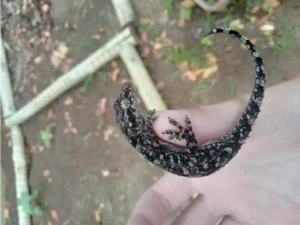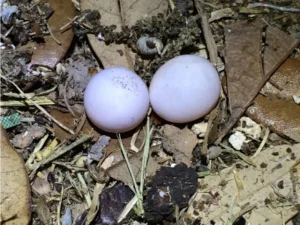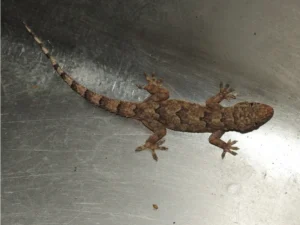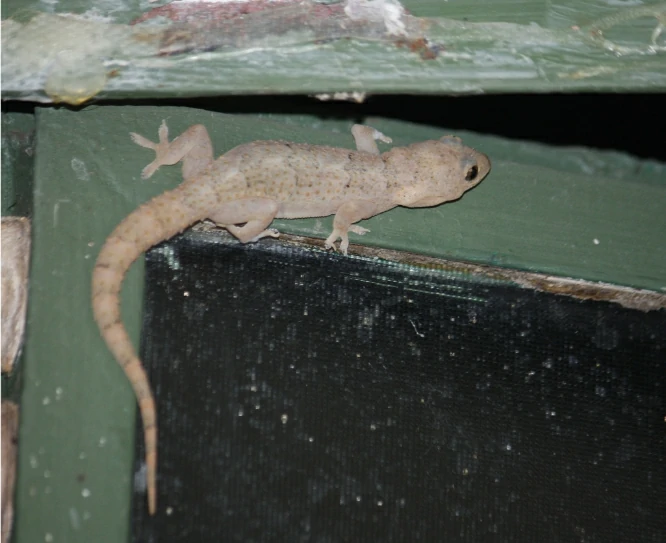If you’ve ever seen a tiny house gecko dart across your wall at night, you know how common they are. They’re fast, quiet, and seem to be everywhere. They cling to walls, hide near lights, and snap up insects before you even notice. They show up so often it’s hard to imagine them disappearing. But it makes you wonder: are house geckos endangered?
No, House geckos aren’t endangered. They’re actually one of the most widespread reptiles in the world. They’ve gotten really good at living near people, so their numbers are steady or even growing in lots of places. Some gecko species are rare or at risk, but the common house gecko isn’t one of them.
That doesn’t mean every gecko is safe. The name “house gecko” covers a few species, and not all of them live near people as easily.
What Exactly Is a “House Gecko”?
Before we talk about whether they’re endangered, let’s be clear about what we mean by “house gecko.” The most common one is the Asian house gecko (Hemidactylus frenatus). It’s the small gray or light-brown lizard you often see running across ceilings or walls at night.

They came from Southeast Asia, but they’ve spread almost everywhere people live; Africa, the Americas, Australia, and lots of tropical islands.
They basically hitched rides on ships, planes, and cargo for hundreds of years. Now, they’re one of the most successful reptiles around.
There are also other “house geckos,” like the Mediterranean house gecko (Hemidactylus turcicus) and the Tropical house gecko (Hemidactylus mabouia), that live in different regions. They all behave in similar ways and have adapted really well to living near people.
Why House Geckos Are Doing So Well
The main reason house geckos aren’t endangered is simple: they do really well living around people. They don’t run away from us, they share our homes.
They’ve found the perfect spots near porch lights, in bathrooms, under roofs, behind cracks, and anywhere insects gather. They’ve basically turned our homes into hunting grounds.
Unlike many wild reptiles that need untouched forests or rivers, house geckos do great in cities, towns, and villages. Wherever there’s light and bugs, there’s usually a gecko nearby.
They’re also very adaptable. Whether it’s hot and humid or warm and dry, they adjust quickly. As long as the nights aren’t freezing and there are insects, they survive just fine.
A Species That Spreads Everywhere
It’s rare to find a reptile that spreads so easily, but house geckos have done exactly that. In many parts of the world, they’re considered invasive.

That means they weren’t originally from there but now thrive and sometimes even push out native animals.
For example, in parts of the southern U.S., the Asian house gecko is more common than local gecko species. On some Pacific islands, they’ve even replaced smaller native lizards because they’re better at hunting bugs and reproducing quickly.
So instead of being endangered, house geckos are sometimes the ones putting other small reptiles at risk.
Do House Geckos Have Any Problems?
Even though they’re doing well, house geckos still face a few local challenges. They may not be endangered globally, but not every group has it easy.
In colder areas, harsh winters can kill them unless they live inside warm buildings. In places where they’re native, losing forests and pollution can mess up their homes.
Predators like cats, snakes, bigger lizards, and birds also eat them. And in some areas, people see geckos as pests and try to get rid of them, even though they help control insects.
Still, house geckos breed fast and survive easily, so their numbers haven’t really dropped. They’re the kind of animal that seems to find a way no matter what.
How Fast Do They Multiply?
House geckos don’t just survive, they multiply. Female geckos lay small batches of eggs, usually two at a time, every few weeks during warm months.

The eggs are sticky and often hidden in tiny cracks, under furniture, or in plant pots.
It only takes a month or two for the eggs to hatch, and the babies are independent right from the start. In the right conditions, they grow up in under a year. That’s why their populations grow so fast.
A single pair of house geckos can lead to dozens of babies in a year or two. That’s one big reason they’re thriving in so many parts of the world.
How House Geckos Compare to Other Geckos
When people hear “gecko,” they often think all geckos are common. But that’s not true. While house geckos are thriving, many other gecko species are struggling.
For example:
-
The Madagascar leaf-tailed gecko is endangered because it’s losing its home and is taken for the pet trade.
-
The New Caledonian giant gecko is at risk because of deforestation and predators that aren’t native.
-
Some day geckos are also threatened because their forest homes are being destroyed.
These species need very specific conditions to survive. House geckos, on the other hand, can live almost anywhere warm with insects around.
How People Help (and Hurt) Them
It’s unusual, but humans have actually helped house geckos spread. Our lights attract insects, and insects attract geckos. Our houses give them shelter, warmth, and safety from many predators.
Every time cargo moves across borders, a gecko or its eggs might come along. That’s how they’ve reached so far from home.
But humans can also hurt other gecko species, especially where they’re native. When forests are replaced by towns or farms, some geckos that aren’t as adaptable can disappear. So while one species thrives, others may struggle.
Why People Sometimes Think They’re Pests
In many places, people treat house geckos like unwanted guests. They can leave droppings on walls and windowsills, and their chirping at night might startle you. But they’re actually helpful.

House geckos eat mosquitoes, moths, flies, and other bugs that would otherwise swarm around lights or inside homes. In a way, they’re free pest control.
In some cultures, geckos are considered good luck, a sign of a healthy home. In others, people think they bring bad luck or sickness, which sometimes makes them try to get rid of the geckos. Still, their numbers rarely drop, even where people dislike them.
What Conservationists Say About House Geckos
Because house geckos are doing so well, they’re listed as Least Concern on the IUCN Red List, which ranks how threatened species are. That’s the same category as pigeons or sparrows (animals that are common and stable).
Researchers still watch their spread, though, because in some areas they’ve become invasive. They can compete with native lizards for food and homes, which changes local ecosystems.
So while house geckos aren’t endangered, they’re still worth keeping an eye on, just for the opposite reason of most animals.
What Would Happen If Their Numbers Dropped?
It’s hard to imagine a world without house geckos, but if their numbers dropped, we’d probably see more insects. These little lizards eat tons of bugs every night, especially mosquitoes and small moths.
They’re also part of the food chain; birds, snakes, and bigger lizards eat them. So even though they’re tiny, they help keep the balance.
Luckily, that’s very unlikely. They live near people so well that they’re one of the few reptiles that actually thrive in cities.
How to Help House Geckos (If You Want To)
Most of the time, you don’t need to do anything to help house geckos. Just leave them alone. But if you like having them around, there are a few easy things you can do:
-
Avoid using harsh pesticides, they kill bugs the geckos eat and can make the geckos sick.
-
Keep outdoor lights on at night (geckos love lights because they attract bugs).
-
Don’t chase or trap them, they usually stay out of your way and help with insects.
-
If one gets stuck inside, gently guide it outside instead of grabbing it.
These small steps make your space friendly for geckos without much effort.
Conclusion
So, are house geckos endangered? Not at all. They’re one of the few reptiles that have adapted perfectly to living near people. Far from disappearing, they’re spreading and thriving around the world.
They don’t need special protection or rescue programs, just a bit of space to live and a steady supply of insects. In return, they quietly keep our walls and ceilings free of bugs.
House geckos show that not every animal struggles around people. Some, like them, have found a way to live with us and seem perfectly happy doing it.
Hi, my name is Ezra Mushala, i have been interested animals all my life. I am the main author and editor here at snakeinformer.com.

